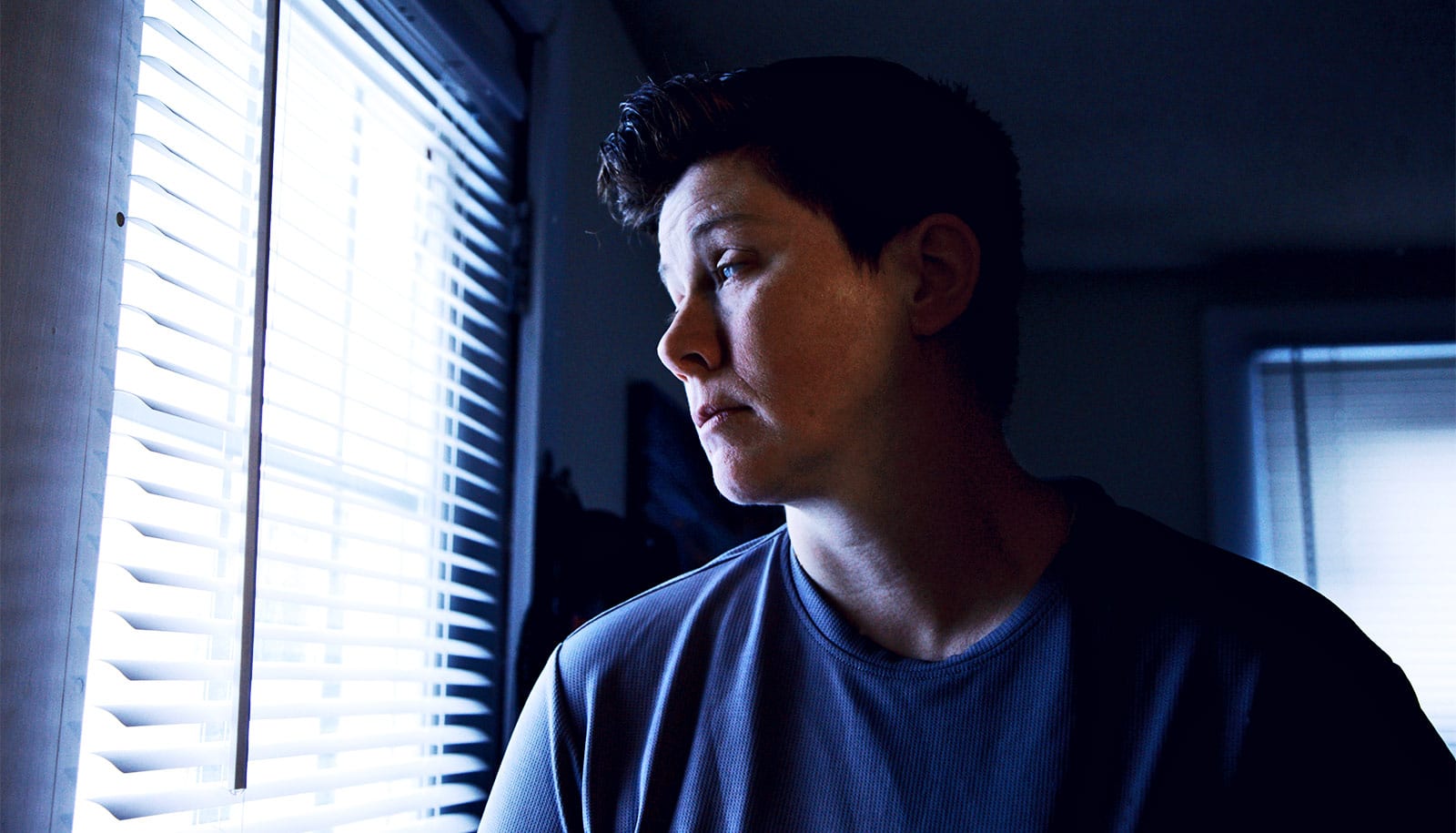
(Credit: elisa la/Flickr )
Peek at your own brain activity may curb mental illness symptoms
A technique called real-time fMRI neurofeedback that lets people see their own brain activity could help curb symptoms of depression, anxiety, and more.
A new study finds some positive results for treating mental illness with an approach called real-time fMRI neurofeedback.
In recent years, researchers have begun using functional magnetic resonance imaging (fMRI) not just to better understand the neural bases of psychiatric illness, but also for experimental treatment of depression, ADHD, anxiety, PTSD, substance use disorder, and schizophrenia with real-time fMRI neurofeedback.
“This training, known as neurofeedback, offers an exciting and novel treatment method for psychiatric illness.”
An fMRI is a noninvasive neuroimaging technique that measures brain activity by detecting changes associated with blood flow. It relies on the fact that cerebral blood flow and neuron activation move in tandem: when a specific area of the brain is in use, blood flow to that region increases.
From simple tasks such as controlling hand movement for picking up a fork or spoon to complex activities such as understanding language or solving math problems, neuronal activity constantly fluctuates. Those neural fluctuations allow scientists to see which regions of the brain are more active.
Building directly on the fMRI approach, real-time functional magnetic resonance imaging neurofeedback (rtfMRI-NF) is a type of biofeedback in which an fMRI signal is used by patients to learn to regulate their own brain activity in real time while they’re in a scanner. For example, people with depression may be less able to control their emotional responses. Biofeedback can be used to help such patients control, or regulate, their own emotional responses.
While rtfMRI-NF has emerged in recent years as a promising experimental intervention, it’s also a costly procedure that requires extensive technical setup to allow for real-time analysis. That’s why a quantitative data review was overdue.
Researchers set out to determine if rtfMRI-NF can help a person regulate neural activity in a way that might improve psychiatric illness. They looked at 17 relevant studies that included a total of 410 participants. The findings of their meta-analysis have been published in the journal Neuroscience and Biobehavioral Reviews .
Regulating the brain’s activity with neurofeedback
The review found that when people were shown their own brain patterns in real time, they were able to regulate activity in specific regions of the brain, says lead author Emily Dudek, who after graduating from the University pf Rochester became full-time lab manager for David Dodell-Feder, an assistant professor with dual appointments in the psychology department and the neuroscience department at the University of Rochester Medical Center.
“This training, known as neurofeedback, offers an exciting and novel treatment method for psychiatric illness,” Dudek says.
Coauthor Dodell-Feder agrees that the findings are “very promising,” especially because there are very few treatments, psychopharmacological included, that specifically target neural circuits known to contribute to psychopathology.
Yet, there are caveats: the data show less clear evidence that volitional control over the brain regions targeted by neurofeedback translates to an improvement in a person’s symptoms or cognitive impairments. For example, when analyzing the impact of rtfMRI-NF on symptoms, the team found an approximately 60% chance that a randomly selected person who received rtfMRI-NF showed improvement in symptoms compared to a randomly selected person who received a placebo procedure.
“It’s not a slam dunk,” says Dodell-Feder, whose main research focuses on how humans navigate the social world and how those processes go awry in people with schizophrenia .
Moreover, the analysis of publication bias—that’s the team’s attempt to estimate whether there are other studies that have not been published and which may have failed to find an impact of rtfMRI-NF on symptoms—suggests that the positive effect on symptoms may even be smaller than 60%.
The team analyzed symptom and cognition data in a variety of ways, and some analyses, especially those that looked at outcomes over a wide spread of mental illnesses—such as anxiety, depression, and psychosis—were more favorable. For example, they found clearer evidence that rtfMRI-NF may improve a person’s responses to aversive situations or context, such as fear, anxiety, and loss.
For their meta-analysis, Dodell-Feder and Dudek evaluated rtfMRI-NF in two contexts: first when participants were regulating their brain’s response while receiving neurofeedback in so-called training sessions, and second when participants were regulating without neurofeedback in so-called transfer sessions to see if the previously learned regulation could be maintained in daily life.
Indeed, patients across a range of mental illnesses were able to use a neurofeedback signal delivered through rtfMRI to self-regulate neural activity in the targeted region. Next, the team examined whether people can truly learn to control certain brain regions and whether they can regulate the targeted regions even when neurofeedback is not available.
From the scanner to regular life
“Ultimately we want people to be able to take what they learn in the scanner during the training sessions to use in their day-to-day life,” says Dodell-Feder. “If they can do that, it shows that the neurofeedback is meaningful, that they are taking something away from it, and that they can now apply that experience—even without neurofeedback.”
The analysis of so-called transfer scans—taken at a follow-up session—found that participants were able to intentionally control targeted brain regions even in the absence of a neurofeedback signal. The data indicated that while rtfMRI-NF has a moderate impact on targeted regions during training, that impact increases later when the neurofeedback signal is not provided.
“We believe this provides relatively strong evidence that volitional control over neural processes that are specifically targeted during training is possible,” says Dudek, who is now a clinical research coordinator at the Brain Injury Research Center of Mount Sinai in New York City. “This volitional control was also present in contexts in which no feedback was provided.”
Together, the data suggest a positive impact of rtfMRI-NF on brain and behavioral outcomes, although more research is needed to determine how exactly it works, under what circumstances, and for whom specifically, says Dodell-Feder.
The researchers have started on another study that seeks to train people with schizophrenia to self-regulate regions of the brain that are important for social information processing. The study is ongoing and early results, while still limited in number, look promising.
Source: University of Rochester
The post Peek at your own brain activity may curb mental illness symptoms appeared first on Futurity .
Share this article:
This article uses material from the Futurity article, and is licenced under a CC BY-SA 4.0 International License. Images, videos and audio are available under their respective licenses.
Related Articles:
COVID survivors report more post-traumatic stress symptoms
Sept. 1, 2021 • futurityCan we turn down the emotion on traumatic memories?
May 24, 2019 • futurityLinks/images:
- https://www.futurity.org/real-time-brain-activity-neurons-1753102/
- https://doi.org/10.1016/j.neubiorev.2020.12.020
- https://www.futurity.org/early-schizophrenia-treatment-2283262-2/
- https://www.rochester.edu/newscenter/experimental-neurofeedback-imaging-treatment-for-psychiatric-patients-470142/
- https://www.futurity.org/fmri-neurofeedback-brains-mental-illness-2522312/
- https://www.futurity.org


